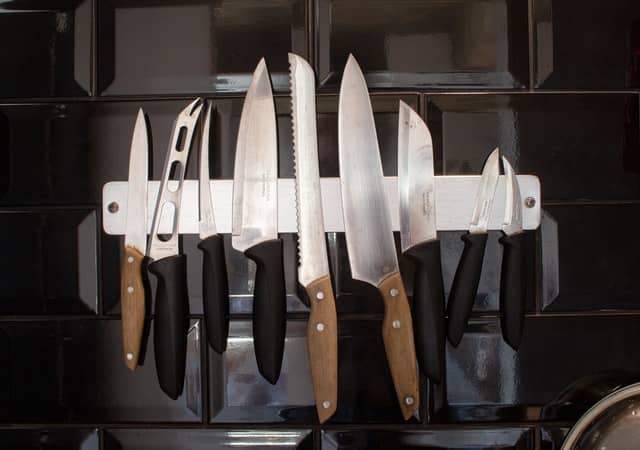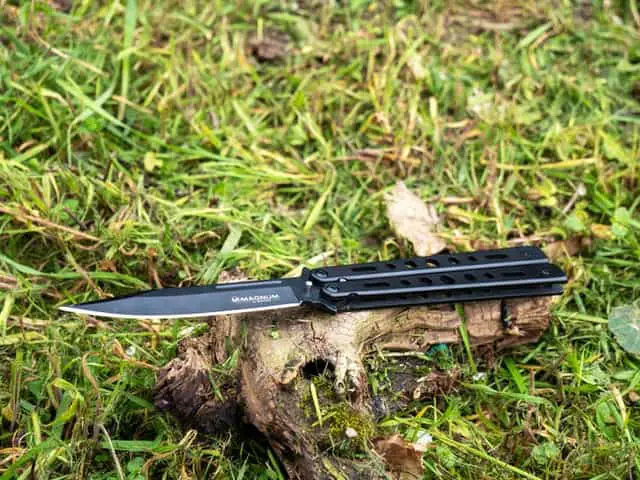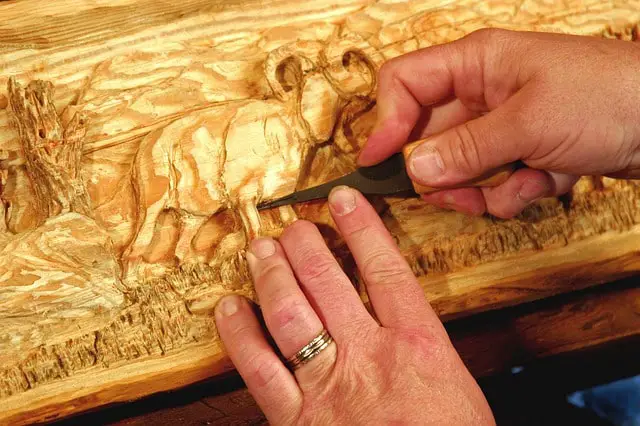To some, it is the fan knife. Most people come to find out that it is the balisong knife after they only thought it was a butterfly knife. Maybe, like you, I am most people too.
No matter what you call it, though, these knives look cool and bring an extra X factor to the pocket knives that we already know.
If you have ever seen a balisong knife in use by one of your favorite actors, though, you might want to try it out also.
That is why I have gone all out on this guide around how to use a butterfly knife safely and stylishly.
Table of Contents
The Most Important Thing
This, right here, is the most important part of this piece.
If you won’t keep to this, please stop reading right now:
Only use a blunt trainer for the butterfly knife tricks on this list.
The balisongs are deemed illegal in most places, and that is not only because of the damage that you can inflict on others. Once you start watching these tutorial videos and following these tricks, you will see that you can easily harm yourself while using them also.
The butterfly knife trainer looks like the real deal but comes with less sharp or outrightly dull edges. You can get some cool ones like these picks I found on Amazon:
- Marcolo Practice Butterfly Knife
- Andux Land Butterfly Knife Trainer
- Toptens Finger Strength Butterfly Stick
Basic Anatomy of Butterfly Knives
For those who have never used a butterfly knife before, you might hear some keywords that you are not familiar with before.
Don’t worry. This part is simple stuff that you’d learn in five to ten minutes, tops.
Bite Handle
It is called the bite handle for two reasons.
This is the part of the handle that closes on the sharp side of the knife. Even when the knife is fully closed, the user can still cut themselves from holding the bite handle in their hands.
Likewise, the latches comes attached to the bite handle.
Safe Handle
The opposite of the bite handle, as the name implies. The safe handle is the second handle of the butterfly knife from where it is safer to hold. The safe handle can also be quickly identified as the handle without the latch.
Latch
The latch, attached to the bite handle, is the locking mechanism keeping the two handles of the butterfly knife in the closed position.
Physical latches are used on some knives, but they require additional effort to close. That is why most modern designs employ magnets instead.
Latches are designed to be strong enough such that the knife does not open unless the user wants it to.
Kicker
An area on the blade that keeps the sharp side of the knife from grazing against the inside of the handle. It is a blade safety precaution to ensure minimal or less damage to the blade from friction.
Tang
A small area on the handle where the blade is attached. Pivot pins are used to secure the blades to the handle while still ensuring that they can move freely around.
The above details the special parts of a butterfly knife. Other parts (such as the blade and its parts, pivot joint, swedge, etc) can be found on the knife anatomy page.
The Best Beginner and Intermediate Butterfly Knife Tricks
Now that we have the safety part out of the way, I want to assume everyone has their choice butterfly knife at hand now.
Let’s get to it then.
Opening the Knife
Well, your balisong butterfly knife is pretty much useless in the closed position. So, the first thing to learn is how to get it open.
Now, this is not just any opening technique but a slick flipping move that your friends will envy once you master it.
Watch the flick opening sequence above.
Closing the Knife
You can only keep your knife open for so long. Of course, it’s a fake balisong but that does not mean you should leave it out there like that.
From the opening sequence, you can flip the knife around in almost the same format and have it closed.
You’ve done the flip opening technique. Now, it’s time for some flick closing too.
Wrist Pass
For those who want to add more basic and advanced tricks to their arsenal, the wrist pass is one of the most important foundation blocks for you.
The butterfly knife trick is not hard to master and doesn’t take too much practice, but you’ll be glad you learned it later on.
Basic Twirl
In fast motion, the basic twirl looks like one of the most advanced tricks in the book. Nail it and this easy trick makes you one of the coolest kids on the block.
You don’t have to take my word for it. Watch the tutorial to find out yourself.
Y2K Rollover
Most people love the Y2K because of how sleek it looks. It takes some great hand-eye coordination to get down, but it is pretty much easy from there.
The major difference between the Zen and Y2K rollover aerial tricks is that the latter starts on the safe handle while the former starts on the bite handle. They do require some palm in there, a nice flick of the wrist and you have the trick nailed.
Zen Rollover
Look at the Zen rollover and you instantly understand why you need to use a fake butterfly knife to perform these tricks. The wrong move lands on the sharp edge and you could end up losing a thumb, some fingers, or part of your palm.
Not on my watch, though.
What I love the most about the Zen rollover is how you’d have to perform two tricks in one to pull it off. Once you’ve got it down from multiple practice sessions, though, it goes back to looking like just one trick.
Aerial Tricks 101
The Zen and Y2K rollover might look like some of the best aerial tricks you can learn with your blade right now. Well, till you meet this basic one that takes the flight form of a real butterfly.
What intrigues me the most about this aerial movement is how easy it is to pull off – and how you can incorporate it into other tricks too.
Gambler’s Dagger
I think beginners should get comfortable with opening and closing their butterfly knives before they get here. Again, this is one of those moves that remind you of why you should be using a fake/ trainer balisong at this stage.
The fun Gambler’s Dagger motion makes it an open-close loop when you perform it. Performing the trick right also takes good hand-eye coordination as usual but the mechanism is not that difficult.
Upward Swing Handle Switch Opening
That’s a mouthful.
Fear not – the name just tells you all that there is to this trick, not that it’s scaring you into submission
This is one of those tricks that require the two handles, a knowledge of the wrist pass, and some dexterity that you must have built up.
It simply requires you to make the easy open/ close flick motion, switch the handles, and make the same motion again.
Fan Flourish
I think this is the first move taught to action movie stars – and it reminds me of a flourish card move I learned some time back too.
Although you are not throwing the knife at all, it does look like another aerial trick on its own. The trick is as fun as it looks cool, so I know you’ll love it too.
Fanning
Kinda looks like the fan flourish but this time, you know how to do the former trick better already.
The fanning trick lasts for longer and looks better once you have a hang of it.
Staying Safe with your Butterfly Knife
In the rare case that you skipped the opening parts of this guide on how to use a butterfly knife, the first thing I said was that you:
- go with a fake balisong.
You will find fakes/ trainer butterfly knives that look like the real deal and are as stylish as possible too. I recommended some of such above.
Furthermore, the fact that the knife is dull does not mean you cannot injure yourself/ cause any damage with it. Thus:
- Practice these butterfly knife tricks open spaces and when you are alone.
- When you are not using your knife, make sure to flip it close.
When I discussed open carry knife laws on this website with you, I did mention that some knives are deemed illegal in many places. Even though the butterfly knife is at the blade size range of most pocket knives:
- it must not be carried as a concealed weapon.
If you don’t know what you are doing, you will hurt yourself more with the knife – even in a self-defense situation. Don’t get onto the wrong side of the law so leave your balisong at home – even if it is a trainer.
Finally, learn all of the beginner tricks here (and other related ones) before you move onto the advanced thing. If there is no real reason for you to graduate to the real balisong, stick with your trainer models and you will do just fine.
Final Words
I think those eleven (11) basic tricks for beginners should keep you going for now.
When you can execute them all with the speed, dexterity, and reflex of the instructor, you are ready to move on in the world.







